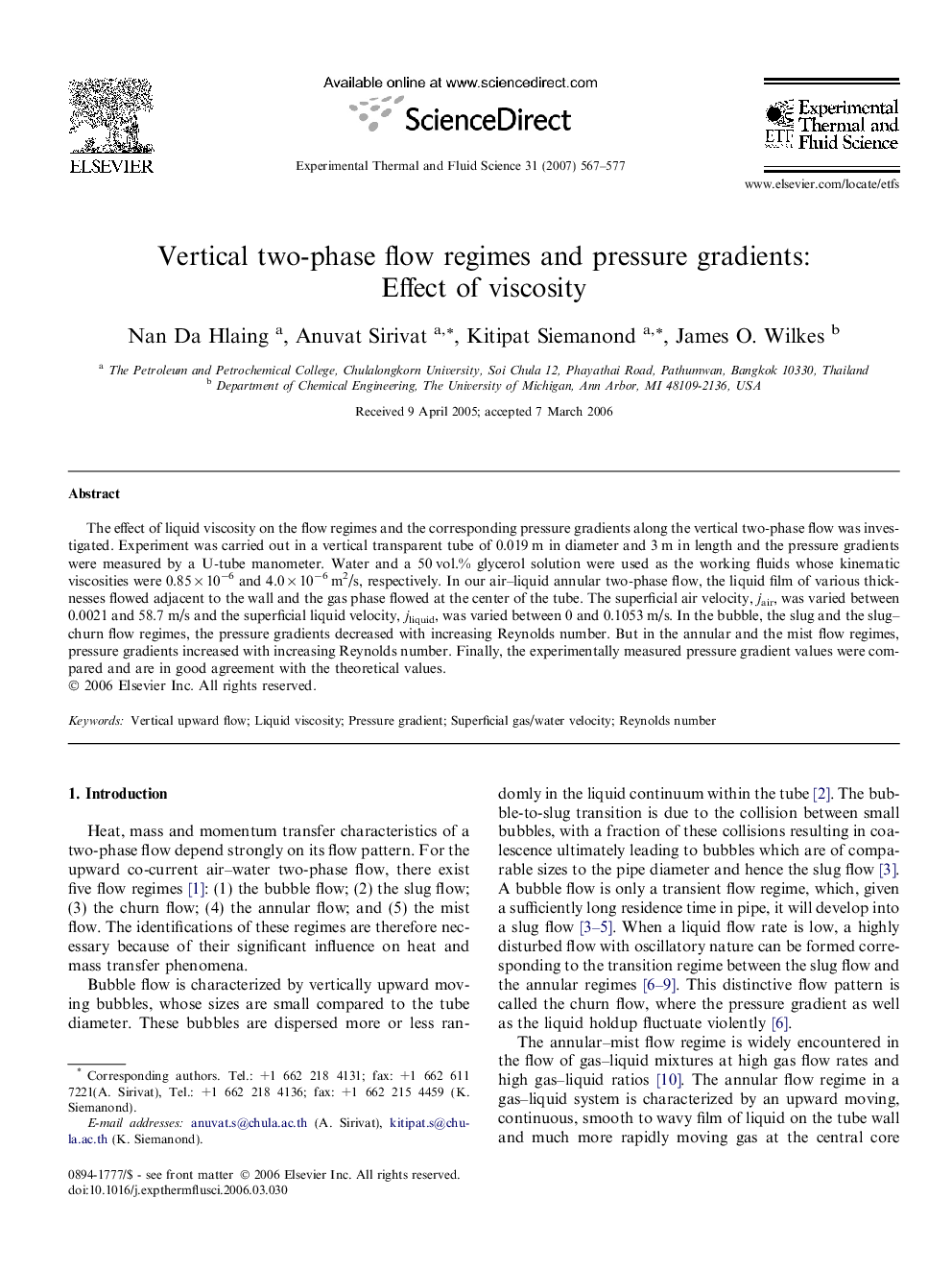| Article ID | Journal | Published Year | Pages | File Type |
|---|---|---|---|---|
| 652559 | Experimental Thermal and Fluid Science | 2007 | 11 Pages |
The effect of liquid viscosity on the flow regimes and the corresponding pressure gradients along the vertical two-phase flow was investigated. Experiment was carried out in a vertical transparent tube of 0.019 m in diameter and 3 m in length and the pressure gradients were measured by a U-tube manometer. Water and a 50 vol.% glycerol solution were used as the working fluids whose kinematic viscosities were 0.85 × 10−6 and 4.0 × 10−6 m2/s, respectively. In our air–liquid annular two-phase flow, the liquid film of various thicknesses flowed adjacent to the wall and the gas phase flowed at the center of the tube. The superficial air velocity, jair, was varied between 0.0021 and 58.7 m/s and the superficial liquid velocity, jliquid, was varied between 0 and 0.1053 m/s. In the bubble, the slug and the slug–churn flow regimes, the pressure gradients decreased with increasing Reynolds number. But in the annular and the mist flow regimes, pressure gradients increased with increasing Reynolds number. Finally, the experimentally measured pressure gradient values were compared and are in good agreement with the theoretical values.
